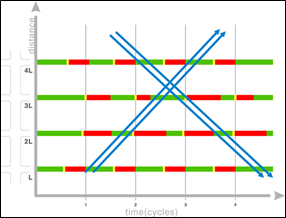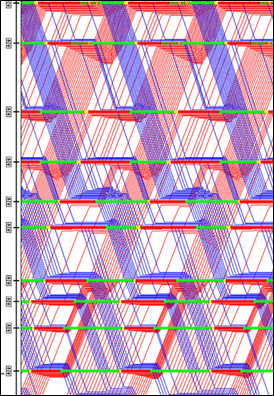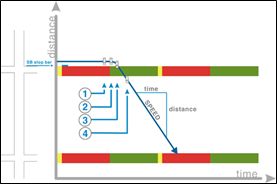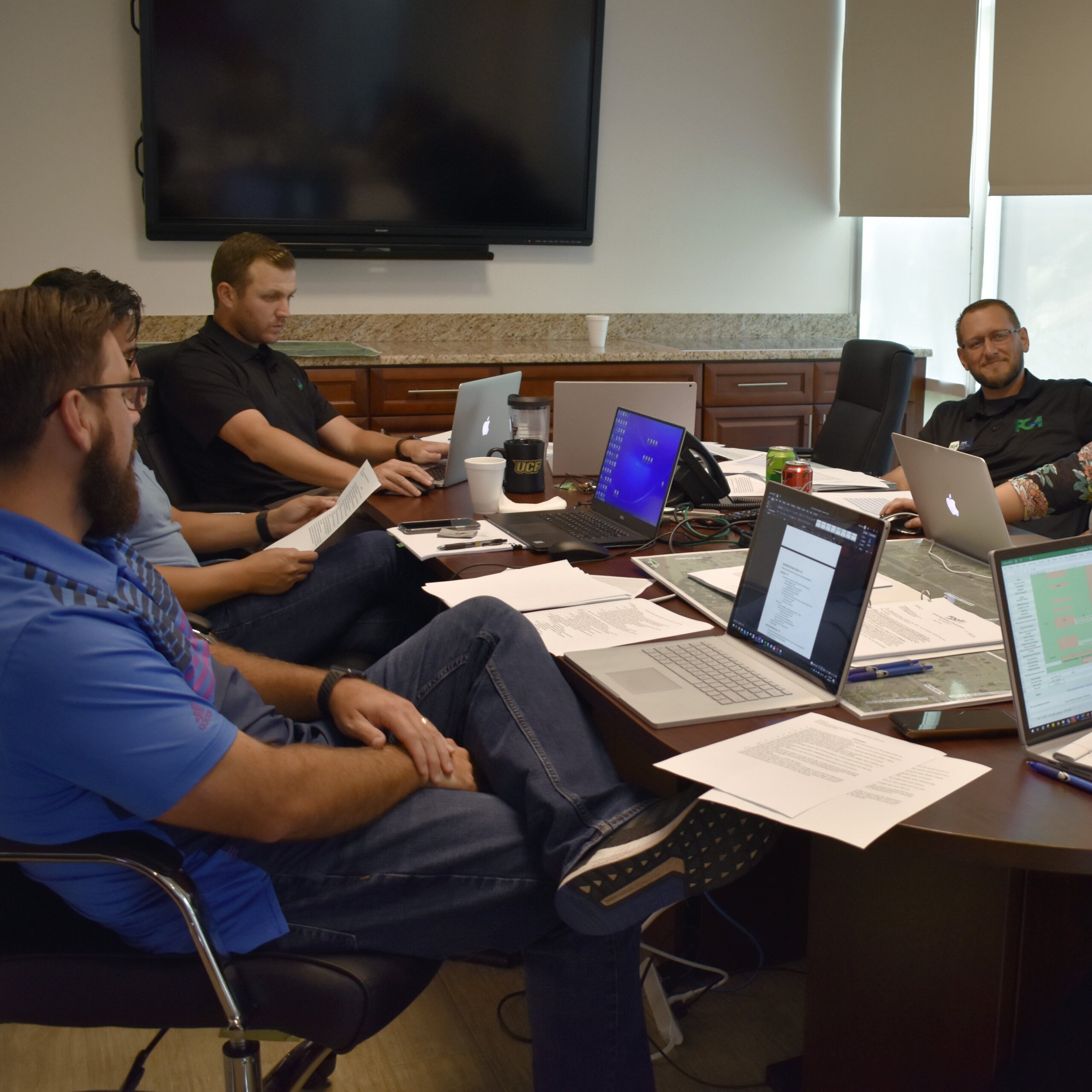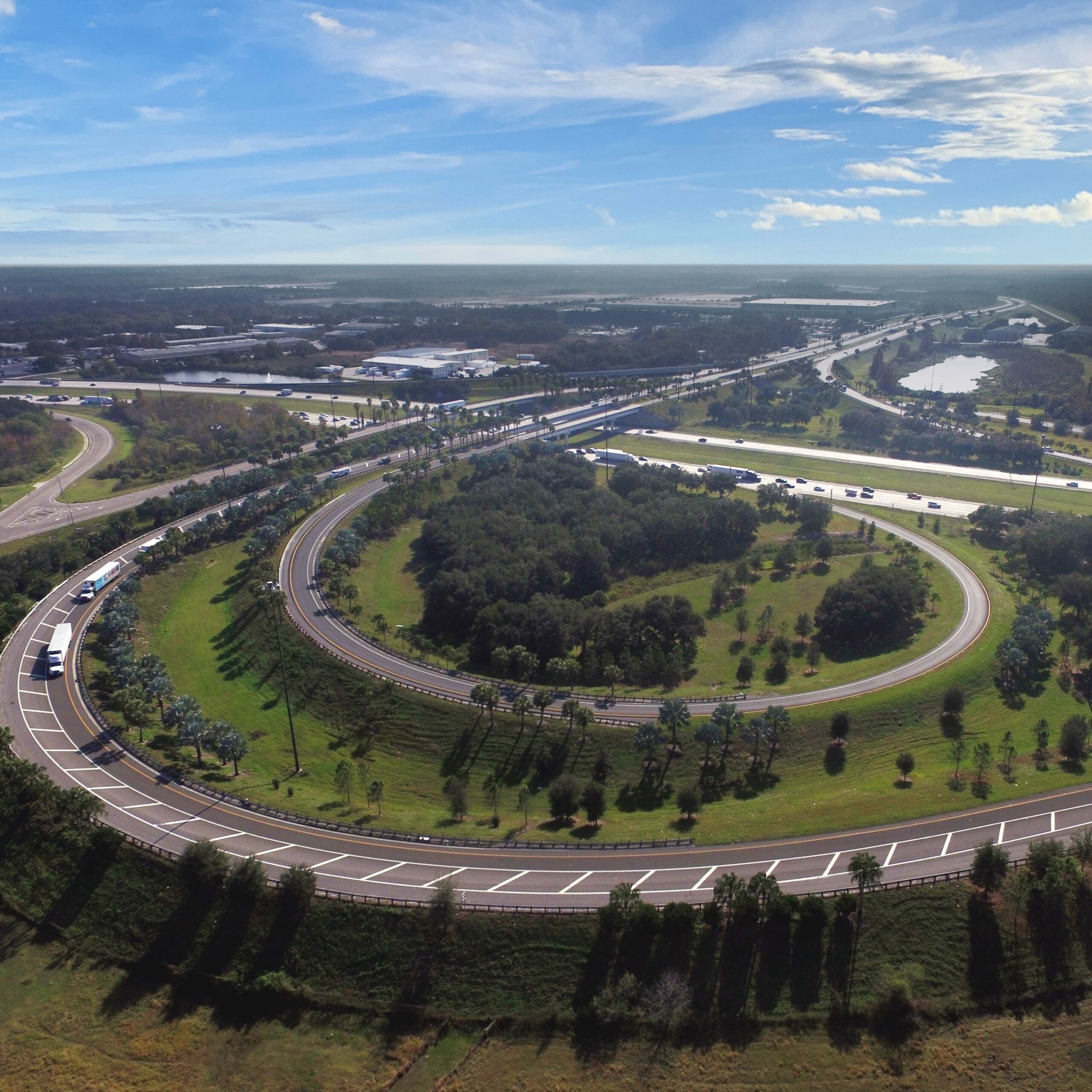Signal Timing
By Michael Fury, PE
How is the green time on a traffic signal determined?
Have you ever sat at a traffic signal and wondered why you always seem to have red lights or why you must wait so long before it turns green? You are not alone; this is a common observation by motorists who travel Florida’s busy streets daily. Traffic signal timing is based on several elements at each intersection.
Simple Coordination Diagram
The primary consideration for how much green time an intersection approach receives is the approach traffic volume. The signal cycle length (the time it takes for a signal to turn green, then yellow, then red) is based on the traffic volume passing through the intersection. In order to get these volumes, the number of vehicles and how they are passing through the intersection are counted. Counts include left and through volumes for each approach. Right turns are included occasionally for various reasons. Traffic engineers and their staff count intersection volumes in a number of ways including using temporary road tubes placed across the approach lanes of an intersection, manual counts by staff stationed at an intersection, inductive loops cut into the pavement on intersection approaches, or by video cameras that record the time and approach lane traffic mounted at an intersection. This data is then compiled, in 15-minute increments, and totaled by approach to find the peak time periods. The approaches with the most volume receive the highest percentage of green cycle time.
Once these volumes are taken, they are broken down by the time of day (such as AM and PM peak hours), and by day of the week (higher volumes may occur during the week and be lighter on weekends). Special events (such as fairs, sporting events, or concerts) may also be factored in.
Traffic engineering agencies periodically update these counts when a new event occurs that influences the traffic at an intersection, or every 1-2 years.
Complex Coordination Diagram
Pedestrian volumes also affect signal timing. Some green times on minor approaches must be extended to allow for a pedestrian pushing an activation button to safely cross a major roadway. Depending on the width of the roadway, this time could be 20-60 seconds long.
Another factor in signal timing is the relationship between a traffic signal and adjacent signals. On many major roadways in our area, the through movements at traffic signals are interconnected along a corridor and must coordinate green times to avoid the need to stop at each location. This is accomplished visually using a time-space diagram.
In order for vehicles along the major street to get through the entire corridor, side street or left turn red signals may be slightly longer than what is required based solely on traffic volumes. By doing this, the overall intersection delay time per vehicle is reduced, even though the side street movements are slightly more delayed. of coordinated intersections increases.
Time-Space Diagram
Emergency vehicles (such as fire or EMS vehicles) can also affect timing. In several counties and cities, an optical device is installed at signals that are activated by a button in the emergency vehicle. This changes the signal to green for an approach with the emergency vehicle, after clearance intervals (yellow and all red times) have been applied on approaches that oppose the emergency vehicle. Sometimes that results in extra delay on opposite approaches from the emergency vehicle. Saving a life is more valuable than a minor delay at an intersection.
The final traffic signal timing at an intersection is a combination of all of these factors. The traffic engineer uses these to provide a safe environment while minimizing delays for the traveling public.
